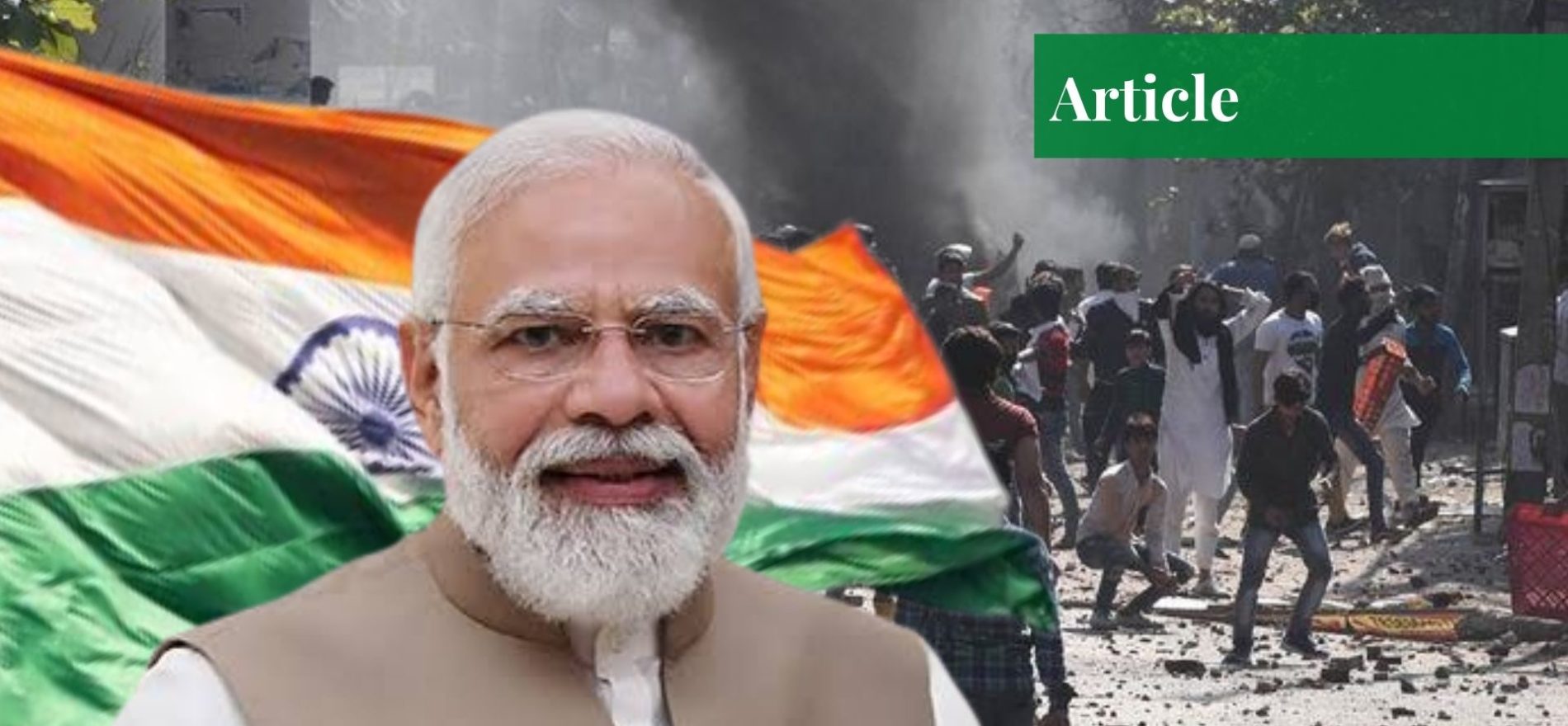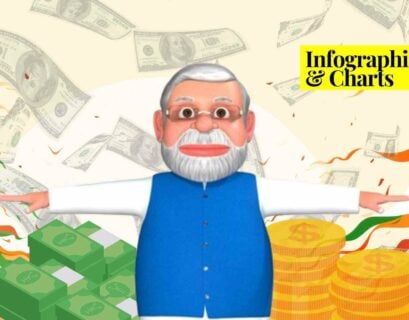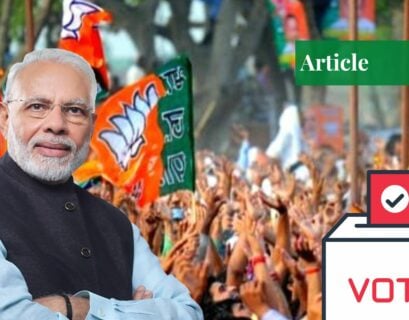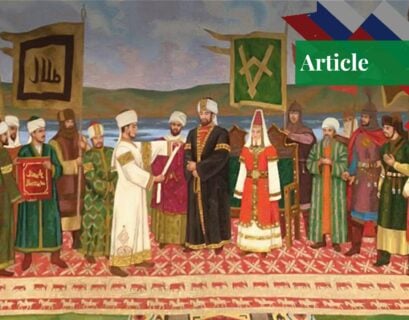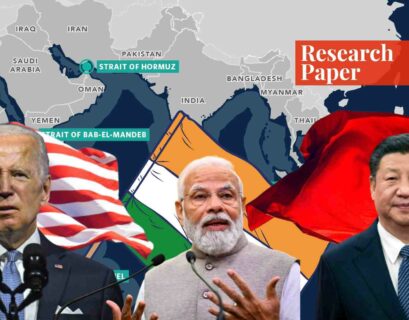Hindutva
As Prime Minister Narendra Modi completes his visit to Indian-Occupied Jammu and Kashmir (IOJK) for the first time since the infamous imposition of Article 370 in August 2019, it remains imperative to question the ideology of Hindutva on which his support rests, and what it means for not just the Muslims in Modi’s India and IOJK, but for the people of the whole world.
“Hindutva” is the political ideology associated with the idea of “being a Hindu,” setting the responsibilities and characteristics an individual must fulfill to be able to be called a “true Hindu,” just like Wahhabism and Salafism are political ideologies associated with the idea of being a true Muslim. Such ideologies are, by definition, exclusionary, as they seek to impose an idea of ‘true-ness,” implying that one may be a Hindu – or Muslim – but not a true one.
Hindutva was first popularised by Indian politician and philosopher V.D. Savarkar, in a 1923 pamphlet named “Hindutva: Who is a Hindu?”. In this pamphlet, Savarkar espoused an idea of Hindutva by which India was seen as the realm solely of true Hindus, with no space or tolerance for other religions and their believers.
In Modi’s India, Hindutva is the ideology of the ruling Bharatiya Janata Party (BJP), its umbrella organization called the Rashtriya Swayamsevak Sangh (RSS), and many other groups such as the Shiv Sena. While these groups sometimes disagree on policy and objectives, they are agreed upon the promotion of Hindutva in India and the creation of a Hindu-dominated state.
The Rise of Communal Violence
Since the partition of the Indian subcontinent in 1947, both sides of the border have seen deplorable instances of communal violence. However, communal violence against Hindus in Pakistan, who constitute around 2% of the population, has rarely taken the institutionalized form seen perpetrated in India against Muslims.
Though tensions between Muslims and Hindus had run high ever since the violence of partition, they remained relegated to individuals. Regardless, in 1992, the BJP and other Hindu nationalist groups (like the Vishva Hindu Parishad) organized large riots that led to the destruction of the Babri Masjid in Ayodhya, India.
The causes and legitimacy of the destruction of the Babri Masjid have been heavily contested in both Indian domestic affairs and the international arena, given that the prevailing belief amongst the rioters was that the Babri Masjid had been constructed on the site of a temple dedicated to the Hindu deity Ram, which had been torn down by Mughal Emperor Babar.
However, what has not been debated is that the destruction of the Babri Masjid set off a chain reaction of riots and violence that led to property damage worth billions of dollars and the deaths of over 2,000 people. The Mumbai riots in early 1993 alone led to the deaths of over 900 people, nearly 600 of them Muslims.
The violence of 1992-93 seems to have set a precedent for the perceived legitimacy of religiously and communally motivated attacks and violence in the following years. In 2002, Muslims in the city of Godhra in Gujarat attacked and burnt a train carrying Hindu pilgrims from the site of the destroyed Babri Masjid, killing 58 people. In retaliation, Hindu mobs indiscriminately attacked Muslims, their property, and their religious sites, especially in the cities of Godhra, Vadodara, and Ahmedabad.
Estimates vary, but more than 1,000 people were killed in the ensuing communal violence, mostly Muslims. Nearly 100,000 Muslims were displaced and forced into refugee camps, living in deplorable conditions. The Gujarat riots were seen by many Hindutva ideologues as “the first positive response of the Hindus to Muslim fundamentalism in 1,000 years,” a view stated by the chief of the Vishva Hindu Parishad.
Narendra Modi’s India
What makes the Gujarat riots even more troublesome is that there is credible evidence that the state government of Gujarat “not only made no attempt to stop the killings, but also condoned them”, seeing as the government in Gujarat at the time was a BJP government. The deliberate involvement, or at the very least deliberate negligence, of the state government in the killings and communal violence has led many to call the events of 2002 a “pogrom”—a set of deliberate and violent attacks against a racial, religious, or ethnic group.
At that time, the chief minister of Gujarat was none other than Narendra Modi, the man who has been serving as India’s prime minister since 2014. Modi and the BJP came into power in 2014 on the back of an election campaign that heavily relied on the promotion of Hindutva, inciting the long-standing issue of national hierarchy in India. They have espoused anti-Muslim rhetoric that led many to question the secular narrative that India prides itself on and the safety of minorities in the largest democracy in the world.
Unlike parties like the Indian Congress, which tend to take a more pluralistic approach, Modi and the BJP made no attempts to hide that they were a party solely for Hindus, with a vision of a Hindu-dominated India. During his campaign, Modi actually spoke out against fellow BJP members’ anti-Muslim remarks, saying that the elections should be fought on the basis of “the issues of development and good governance,” leading some to believe that perhaps Modi would be a more moderate leader than expected under the BJP.
However, such illusions were soon undone, as India under Modi’s rule has grown less and less pluralistic and more discriminatory and oppressive for Muslims by the day. In Modi’s India, roving nationalist mobs have routinely targeted Muslims, especially those involved in the trading and sale of cattle for meat, seeing as cows are sacred in Hinduism and thereby entitled to protection.
“Cow-protection groups” – claiming links to the BJP or its affiliates – have killed over 40 and injured nearly 300 people, mostly Muslims, between May 2015 and December 2018. The victims were involved in the trading or sale of either live cattle or their meat. While the Indian Supreme Court has often called for restraint and released statements condemning such vigilante attacks on minorities, its actions seem perfunctory given the impunity with which the culprits are able to carry out these attacks. The local and national governments have done little to prosecute the killers, and have often instead targeted victims and their kin under laws banning cow slaughter.
Oppression by Law
The sorry state of affairs goes beyond what is happening in society and extends to governmental policy and law-making itself. Between 2019 and 2020, a number of laws were passed in India that have had overt consequences for the Muslims of India and IOJK. In August 2019, Narendra Modi’s government scrapped Article 370 of the constitution of India, a legal provision that ensured the special status of the state of Jammu and Kashmir ever since 1947.
The country’s only Muslim-majority territory, the Kashmir region, remains a disputed territory between the countries of Pakistan, India, and even China, with Pakistan currently holding sovereignty over Azad Kashmir and India over Jammu and Kashmir – referred to as Indian Occupied Jammu and Kashmir (IOJK) in international affairs.
For over 70 years, Kashmir has remained under Indian oppression, denied the plebiscite to decide its fate that was promised by the United Nations in 1948. Today, Kashmir is the most militarized zone in the entire world, with certain estimates stating that over half a million Indian soldiers are stationed in IOJK.
Under Article 370, the state of Jammu and Kashmir had the power and autonomy to make its own policies regarding property rights and internal affairs, with the issues of defense, foreign affairs, and communications being handled from Delhi. Most importantly, it allowed the local government to prevent non-residents of Jammu and Kashmir from purchasing property in the province.
Scrapping Article 370 was nothing less than completely stripping away any illusions left about the attitude of India towards its occupied portion of Kashmir – colonization. Kashmiris fear that the move by India comes as part of the BJP and Modi’s Hindutva beliefs. By allowing non-Kashmiri Indians (overwhelmingly non-Muslim) to purchase property in Kashmir (predominantly Muslim), they fear that the BJP is attempting to “change the demographic character” of Kashmir, fulfilling their vision of a completely Hindu-dominated nation.
Later that same year, India passed another controversial piece of legislation. The Citizenship Amendment Act (CAA), passed on December 12, 2019, is a law that seeks to fast-track the citizenship application process of immigrants in India from neighboring countries, but that excludes Muslim immigrants. This, coupled with the creation of already controversial national registries, has given rise to fears of Indian Muslims slowly but surely being excluded from legal and equal citizenship in India.
These fears boiled over into action, with many Muslims and civil liberties groups taking to the streets all over India to protest the controversial bill, with the Muslim-majority Shaheen Bagh neighborhood in Delhi becoming a center for the opposition. Clashes between the protestors and Hindu right-wing groups ensued, and over 50 people were killed and hundreds injured. Even Indian police forces took part in the clashes and communal violence, especially in states where the BJP had a majority government, using excessive force against Muslim protestors and wounding many.
The situation of Muslims in India is not much better two years on. Whilst the Citizenship Amendment Act has been put on indefinite hold because of the COVID-19 pandemic, a recent hijab ban in the Indian state of Karnataka, and associated protests and counter-protests have sent India reeling into another bout of communally motivated tensions.
The World’s View
Despite genuine and frequent outcry among the populace in many countries against India’s treatment of Muslims, especially in IOJK, little has been done by governments and international bodies to curb the worst effects of the pervasiveness of Hindutva in Indian society, and now, the government.
India staves off international condemnation and interference by citing the incidents as “internal affairs,” and therefore out of the purview or concern of other countries, calling on them to respect its sovereignty. This is a view that certain countries like Russia have echoed, using the argument to prevent international involvement in the Kashmir issue, saying that to do so would violate Indian sovereignty.
However, the issue runs deeper. India is a country of over 1.3 billion people and is seen by many as one of the future “superpowers” of the world. A rapidly expanding economy, though hit by COVID-19, has lent this view credence. As of 2021, India is the world’s sixth-largest economy, trailing behind the United States and China. In 2021, India recorded exports worth over $300 billion and imports worth nearly $450 billion, a yearly trade total of roughly three-quarters of a trillion dollars!
India is one of the leading producers and exporters of agricultural goods and food, being the largest producer of milk and pulses, and the second-largest of rice, wheat, sugarcane, and cotton. In a world so dependent on Indian trade and economy, international actors must measure their decisions and actions carefully to avoid risking India’s ire.
Take the US and Indian relations for example. Given the negligence (or complicity) of the state government under Narendra Modi in the Gujarat pogrom of 2002, the United States denied Modi entry to their country in 2005. At the time, they saw Modi as simply “a regional official,” not important enough for their decision to provoke Indian anger. However, when Modi was elected Prime Minister in 2014, United States President Barack Obama personally invited him to America, where Modi toured extensively.
India is one of America’s largest trading partners, with a total bilateral trade value of $20.3 billion in 2021-22. Such actions show the malleability of attitudes that the “diplomacy” that shapes international affairs requires. It is this exact prioritizing of economic necessity (not necessarily for bad or evil reasons) over other issues that sadly allows these other issues to continue.
By turning a blind eye to countries that carry out human rights abuses in their (oft-disputed) territory, like India in IOJK, Israel in Palestine, and China in Xinjiang against the Uighur Muslims, because of the economically significant role these countries play, the entire world is complicit in the continuation of these abuses.
Within India, research has shown that under Modi’s BJP, the India media has been largely controlled. The Indian state has actively embarked on the curbing of online, television, and print media’s freedom of expression, promoting the channeling of Hindu nationalist themes and programs, whilst imposing media blackouts in IOJK, which remains under a state of virtual siege since August 2019.
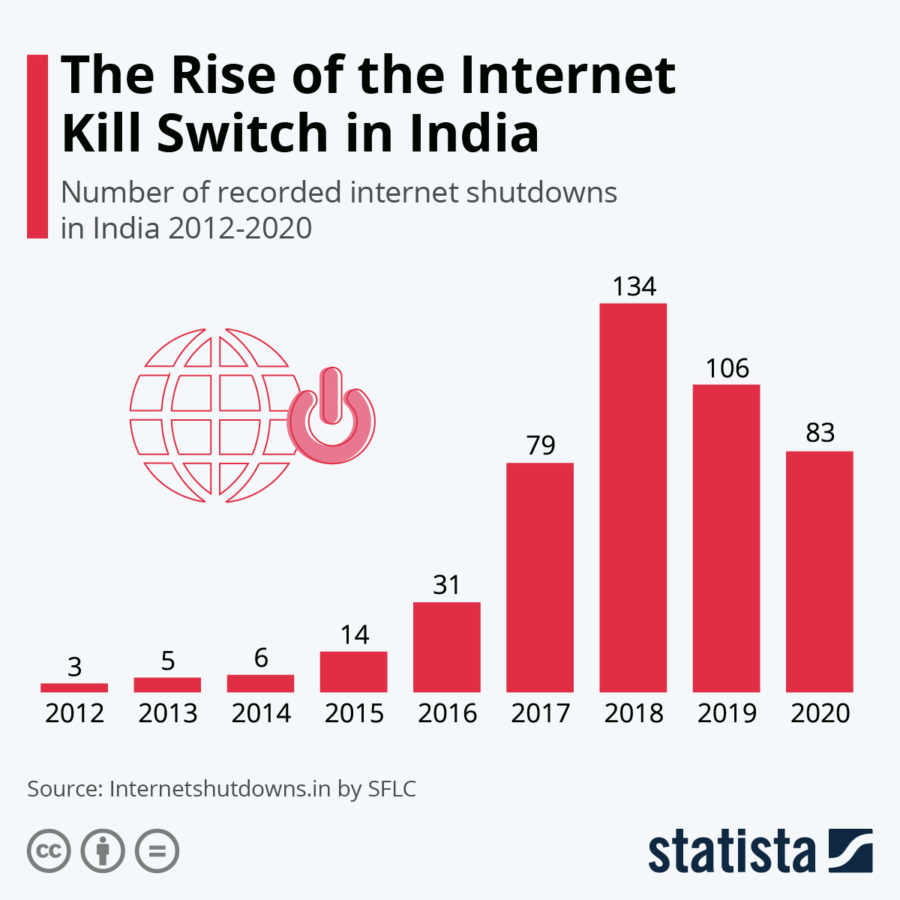
Social media has played a huge role in countering the silence of international media houses in reporting human rights abuses such as the ones mentioned above. Footage of the deadly riots and protests that have happened in India in recent years is available online and makes it difficult for the Indian state to present an alternate view to the world.
Furthermore, Pakistan has taken every chance it can to point out the blatant abuse targeted at Muslims in India, with its former Prime Minister Imran Khan likening Modi’s government in India to the Nazi regime in Germany under Adolf Hitler in the 1930s and ’40s, equating the genocide against the Muslims in India to the prelude to the Holocaust against the Jews in Germany and its occupied territories.
Many have been quick to call out Pakistan for hypocrisy, citing the woes of minorities in the country, with mob lynchings and the abuse of blasphemy laws being commonplace. The miserable situation of Pakistan’s Hindus is especially highlighted, along with the state’s negligence and inability to protect them from harm.
If you want to submit your articles, research papers, and book reviews, please check the Submissions page.
The views and opinions expressed in this article/paper are the author’s own and do not necessarily reflect the editorial position of Paradigm Shift.
